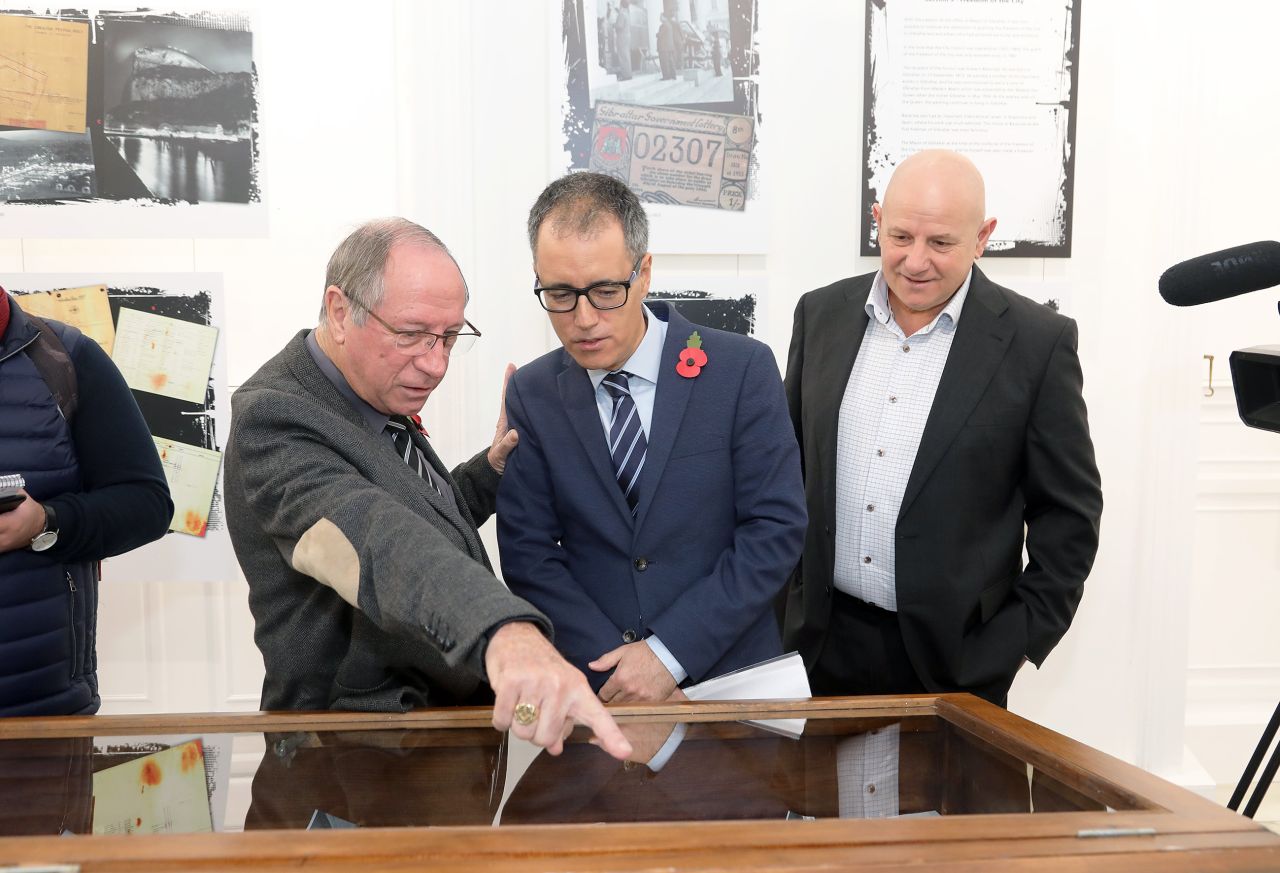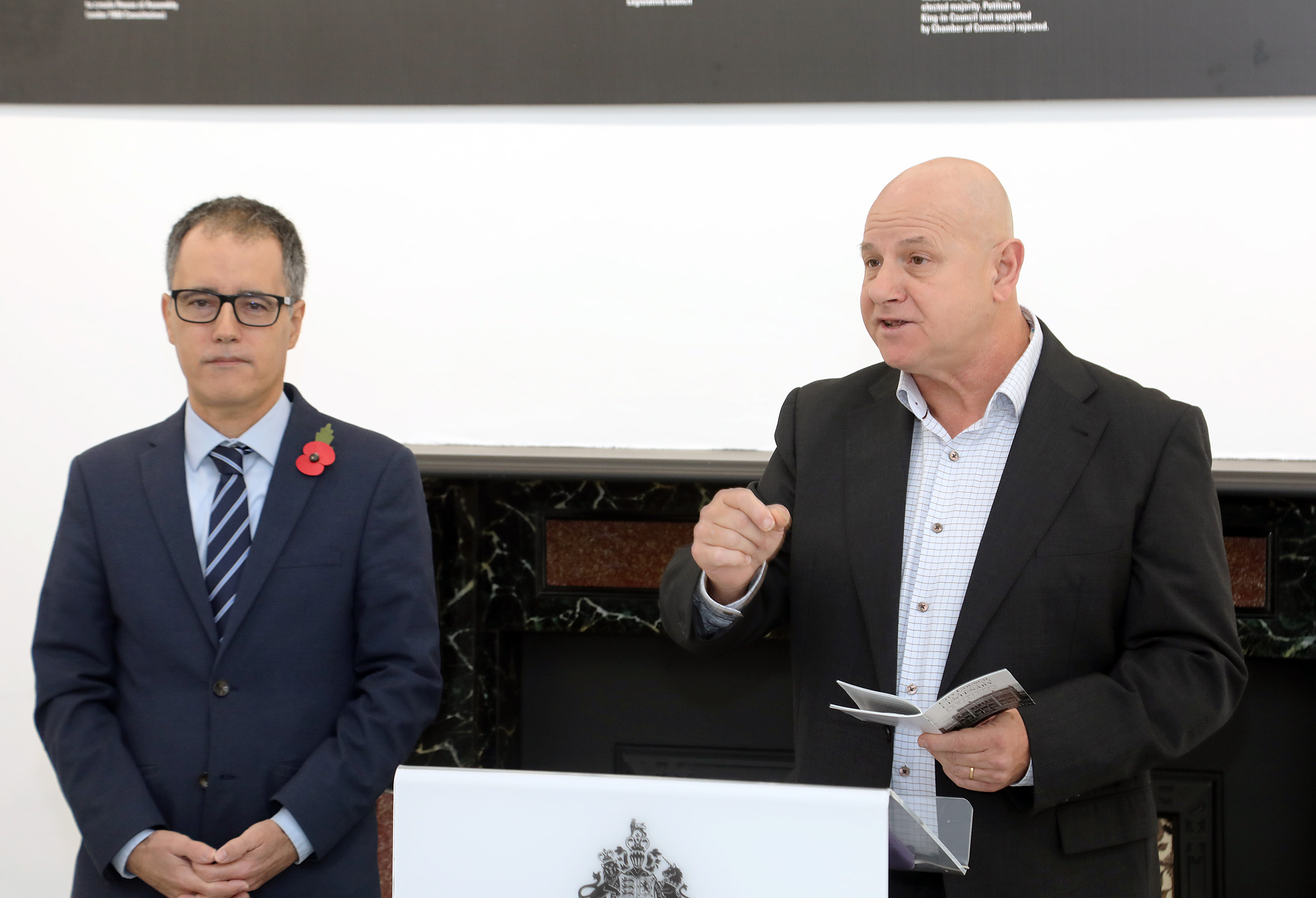100 Years From The Establishment Of The City Council

Below follows the opening address from the Deputy Chief Minister, Dr Joseph Garcia:
Good morning and welcome.
On behalf of the Government, it gives me great pleasure to open this event for the media. It will be open to the public as from tomorrow.
This exhibition marks 100 years from the creation of the City Council in 1921. The road to self-government was never a smooth one for Gibraltar.
Because we were in many ways unique.
A small territory of a global Empire, a strategic military fortress and staging post, but also a civil colony, and all this rolled into one.
And sometimes the interests ofthe military and the interests ofthe civilian population were notthe same.
So every step we took in the direction of greater self-government was subject, not just to the scrutiny of the armed forces, but also to their explicit approval.
For decades, this stymied the political evolution of the Gibraltarians.
As Tommy Finlayson so aptly put it: “The Fortress came First”.
It was not wholly unexpected, therefore, that the main steps along that rocky road to self government followed the two major conflicts that humanity has known.
The establishment of a City Council in 1921 was a direct consequence of the First World War.
Its re-establishment in 1945, along with a Legislative Council a few years later, a direct consequence of the Second.
Gibraltar played an important role during World War One.
It was a crucial assembly point for Allied convoys.
They gathered here and sailed east into the Mediterranean, they went west into the Atlantic, also to and from the United Kingdom itself.
And when theWar was over,there was a genuine desire to reward Gibraltar and its people for their contribution to the cause.
A desire to reform and to modernise.
Gibraltar is aVictorian Museum piece, wrote a senior UKofficial many years later, and itis high time a fresh wind blew through it.
But this sentiment was coupled with certain apprehension as to the consequences that any devolution of power might bring.
The creation of a City Council in 1921 reflected this attitude.
It was indeed the first step in the direction of self-government butit was a small and a cautious step forward.
The Council, for example, was established with an in-built majority of five appointed officials over four members elected by male ratepayers only.
Those officials often included the different branches of the armed services, whose representatives took their seats in full uniform each guarding their own patch from the other, but also from encroachment by the Gibraltarian elite.
The Council’s powers were essentially those previously exercised by the Sanitary Commission that it replaced.
It took over their staff and their premises.
The new body would continue to be presided over by a Chairman as opposed to a Mayor. This was then, in certain important respects, a City Council a la carte.
It reflected the delicate balance of competing interests which was then a hallmark of political life in Gibraltar.
However, its establishment was nonetheless an important landmark in that political and constitutional development of Gibraltar.
It set the scene for what was to come later.
In particular, demands for an elected majority on theCityCouncil - which was achieved afterWorld War Two during which it had been suspended.
Students of the modern history of the Gibraltarians will understand that in institutional terms this was where the journey of our political representation as a people actually begun.
The Council’s powers were extended over the years.
Our forefathers, unsurprisingly, pushed to accumulate more and more responsibility in the body that they came to control after 1945.
James Andrews-Speed was its first Chairman in 1921.
The office of Mayor eventually replaced that of Chairman.
In 1955, Sir Joshua Hassan became its first Mayor.
The Council went on to exercise its functions until 1969.
It was then merged with the Legislative Council to form the Gibraltar House of Assembly. The exhibits around us tell this fascinating story.
There are a total of 243 captioned, dated and numbered images.
Eleven sections cover different periods of our political evolution.
One section is entitled Creation and Premises.
I Found it pertinent to learn that the original home oftheCityCouncil was actually inConvent Place, in premises which were inherited from the Sanitary Commissioners.
Today, it is wonderful to see the exhibition housed in this building.
The very location where the meetings and deliberations of that Council took place during most of its existence.
I want to thank my colleague the Minister for Culture and His Worship the Mayor for facilitating the use of this venue.
The Government was delighted when the Archivist Anthony Pitaluga proposed an exhibition to commemorate the centenary of the establishment of the City Council.
And on behalf of the Government, I want to formally thank you Anthony, your team at the National Archives and the many volunteers and contributors who have come forward to make this a reality.
Thank you all.
Thank you for your enthusiasm, for your time and for your dedication.
And once again Anthony, your curation of an exhibition is outstanding.
This exhibition brings to life one important component of our long and difficult path to self government.
I encourage the public to come and take a look.
Thank you.

Latest News
- Giovanni Origo Budget Speech 2025 - GSD Shadow Minster for Youth, Tourism, the Environment and Transport
- Budget 2025 Speech by Minister for Industrial Relations, Civil Contingencies and Sport, Leslie Bruzon
- HM Customs Gibraltar Launches ASYCUDA Version 4.4 to Modernise Border Management
- Budget 2025 Speech by Minister for Equality, Employment, Culture and Tourism Christian Santos
- Declaration Of Enlistment By Royal Gibraltar Police Recruits
- Local Actors Travel To UK Drama Festival
- Bridge House Charitable Trust Welcomes Donations
- GSD Says Principal Auditor Report 2018/19 Should Now Emerge
- The Budget 2025 – Minister Gemma Arias-Vasquez's Address
- Ministry Of Equality Marks Successful End Of The Sixth Cycle Of The Women’s Mentorship Programme



